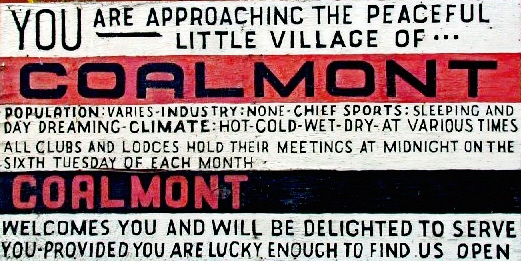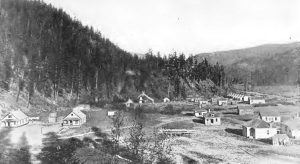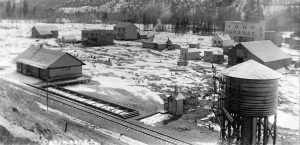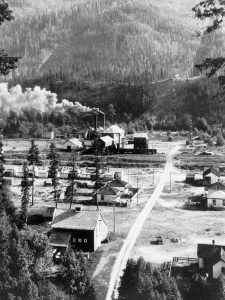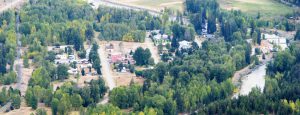By Diane Sterne
Once upon a time at the end of a narrow, twisting trail in British Columbia, a small town sprouted on the forest floor. While cities in the great beyond grew larger and larger, Coalmont never did. Advertised as “The City of Destiny…with a population of 10,000 in the near future”, Coalmont’s population peaked at about 400 in 1922. Today it holds steady at about 85 residents.
Named after the “mountain of coal” behind it, Coalmont grew out of need. In 1910 when B.C. Coal and Coke (later reorganized into Columbia Coal and Coke) formed, they realized a town with stores, accommodation and amenities was needed. Their original location at Granite Creek was abandoned and they moved west to the north side of the Tulameen River below Fraser Gulch where they had sunk a 2,000-foot tunnel. This new town called Cardiff was used for the company’s coal mining offices and residences.
In 1911, Coalmont was born to the east and Cardiff was renamed Upper Town. That same year the VV & E track reached Coalmont. The Coalmont Hotel was under construction as was the General Store and other businesses. By 1912 Upper Town had its first school and Coalmont had a United Church. Mining temporarily ceased in 1914 but life in Coalmont continued with the opening of the All Saints Anglican Church. In 1917, with no work being done at the mines, many landowners abandoned their property leaving it to revert to either the company or the Crown.
1918 was a revival year. Mining resumed under Coalmont Collieries Ltd. That same year, the post office in Granite Creek closed, signalling its final demise. By 1920 a tramline was completed, carrying coal down the mountain to the tipple in Upper Town. The following year, lights, with electricity supplied by the new power plant, illuminated Coalmont. The town of Blakeburn quickly developed up the mountain nearer the mines and its name became official in 1922 with the opening of a Post Office there. Life in Coalmont and Blakeburn was prosperous until August 13, 1930 – Black Wednesday.
An explosion at the number 4 mine in Blakeburn killed 45 men. It was one of the province’s worst mining disasters. This was the beginning of the end for Blakeburn. Coal production dwindled until 1940 when the last mine (number 5) closed. Most buildings in Blakeburn were dismantled and families moved away. With mining terminated, Coalmont lost its electricity. As the power plant’s whistle echoed throughout the valley, bleeding out the last of its steam, Coalmont was left in darkness.
A few families stayed. Oil lamps were dusted off, generators cranked on, and ice from Otter Lake once again provided refrigeration. And that is how Coalmont existed – for 25 YEARS!!! It wasn’t until November 1965 that the West Kootenay Power line extension brought electricity from Princeton. It took innovation and tenacity to keep Coalmont alive during the dark years.
Today the Coalmont Hotel and General Store are closed. There are no businesses or amenities. For many, Coalmont is a blink on the way to nearby Tulameen. It never became the City of Destiny, but for those of us living here, it did become home. Coalmont isn’t a ghost town as many describe it. It is a small town steeped in history, with neighbours who still wave hello and lend a helping hand when one is needed.
